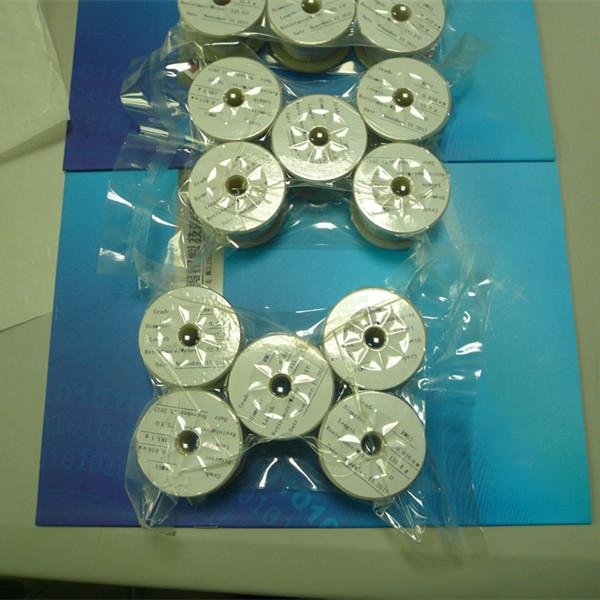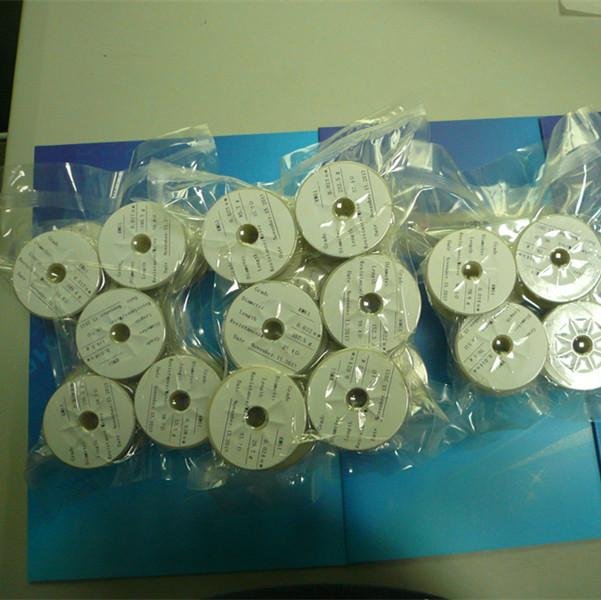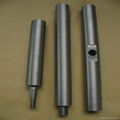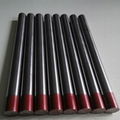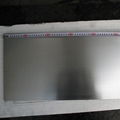| Model: | KK-20 |
|---|---|
| Brand: | KK |
| Origin: | Made In China |
| Category: | Metallurgy , Mining & Energy / Metallurgy & Mining / Other Metallic |
| Label: | tungsten filament , tungsten wire , tungsten spirals |
| Price: |
US $10
/ pc
|
| Min. Order: | 5 pc |
Product Description
Characteristic:
Melting Point: 3410 Ceiclus
Boiling Point:5927 Ceiclus
Density: 19.2g/cm3
Diameter: 0.01-2.00mm
Type: black and cleaned
Quality standard:GB/T 4181-1997(Tungsten Wire) ASTM B760-86
Specific electrical: 0.055 Ohm x mm2/m resistance at 20 ceiclus.
Modulus of elasticity: 410 kN/mm2, at 20 ceiclus
Modulus of elasticity: 410 kN/mm2, at 20 ceiclus
Tungsten wiresdiameters are generally expressed in terms of inches or mils (thousandths of an inch). For thin wires from .001 inches up to .020 inches in diameter, the diameter of the wire is measured by weight per unit length. That is, the weight expressed in mg of a 200 mm length of wire.
The standard diameter tolerance is ± 3% of the weight measurement. Closer tolerances are available, depending upon the application for the wire product.
Straightness of tungsten wire
Wire may be finished in the unstraightened or as drawn condition and is controlled to Bango's internal standards, In addition, wire can be straightened via mechanical or heat treating processes. Typically, the measure of the straightness of a tungsten wire is obtained by cutting a ten inch long piece of wire and allowing it to lie on a flat clean surface. The maximum deviation from a straight line along its length is the quantitative measure of its straightness. In general, as the degree of straightness increases, tensile strength decreases.
Quality and Finish
Wire is free of scratches, kinks and distortions insofar as they are harmful to the intended end use of the product. Surface finish is supplied in the black, as drawn condition, where drawing lubricants and oxides are retained on the surface, or in the cleaned condition by firing in hydrogen or electrochemical etching.
Products Feature:
1. Excellent Conductivity
2. Resistence of high temperature.
3. Abrasion and Erosion.
4. Suitable for making heating wires.
5. Twisted wires for coating films under vacuum and for tungsten wires in electrical light sources usage.
Application:
Tungsten is widely used as refractory metals. In wire form, tungsten wire is essential for the production of lighting products and other goods where its high temperature properties are of use. Among its properties are a melting point of 3410° C, a low coefficient of thermal expansion and low vapor pressure at elevated temperatures along with good electrical and thermal conductivity.
The important applications of tungsten wire are for the production of coiled incandescent lamp filaments, cathode and support structures for power tubes, heating elements for high temperature furnaces and evaporation sources in metallizing processes. Thicker sizes of tungsten wire, straightened, finish-ground and cut into rod pieces are widely used for glass-to-metal seal lead parts in the lighting and electronic industries.
Member Information
| Luoyang KeKai Tungsten&Molybdenum Technology Co.,Ltd | |
|---|---|
| Country/Region: | He Nan - China |
| Business Nature: | Manufacturer |
| Phone: | 13598474624 |
| Contact: | Linda (Sales) |
| Last Online: | 02 Jan, 2018 |

